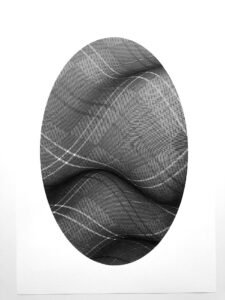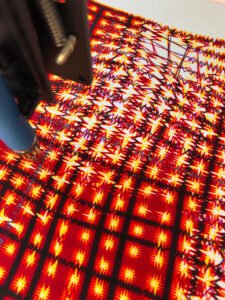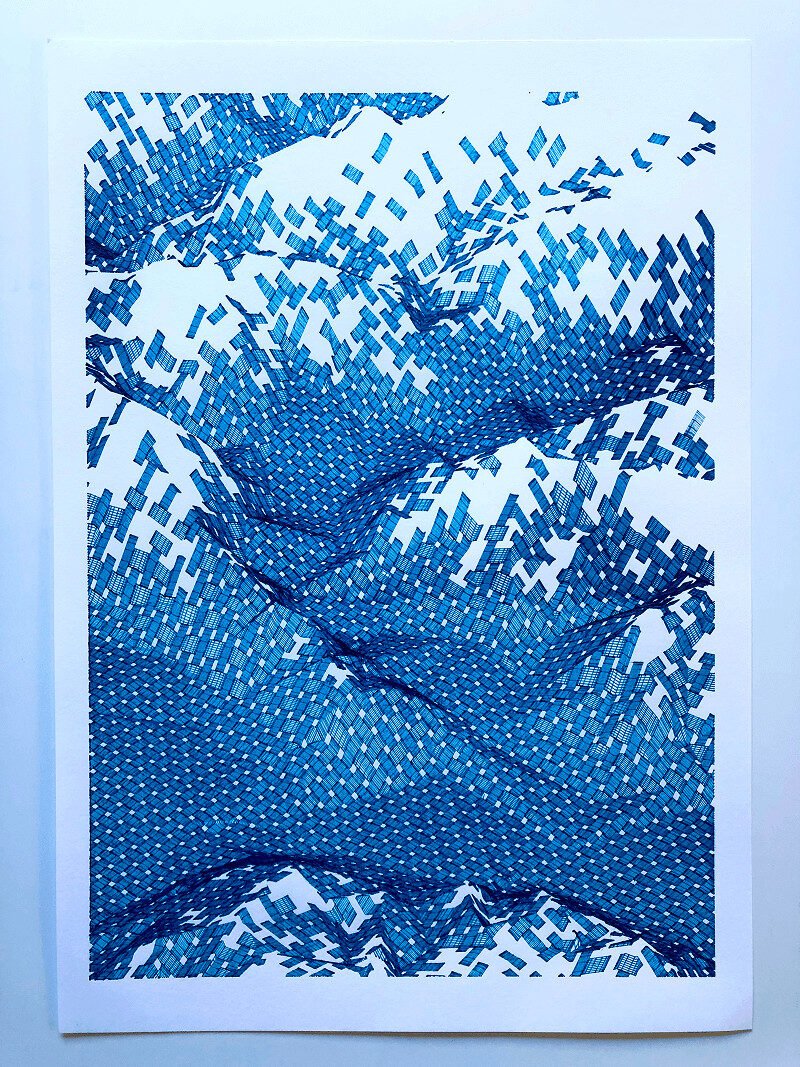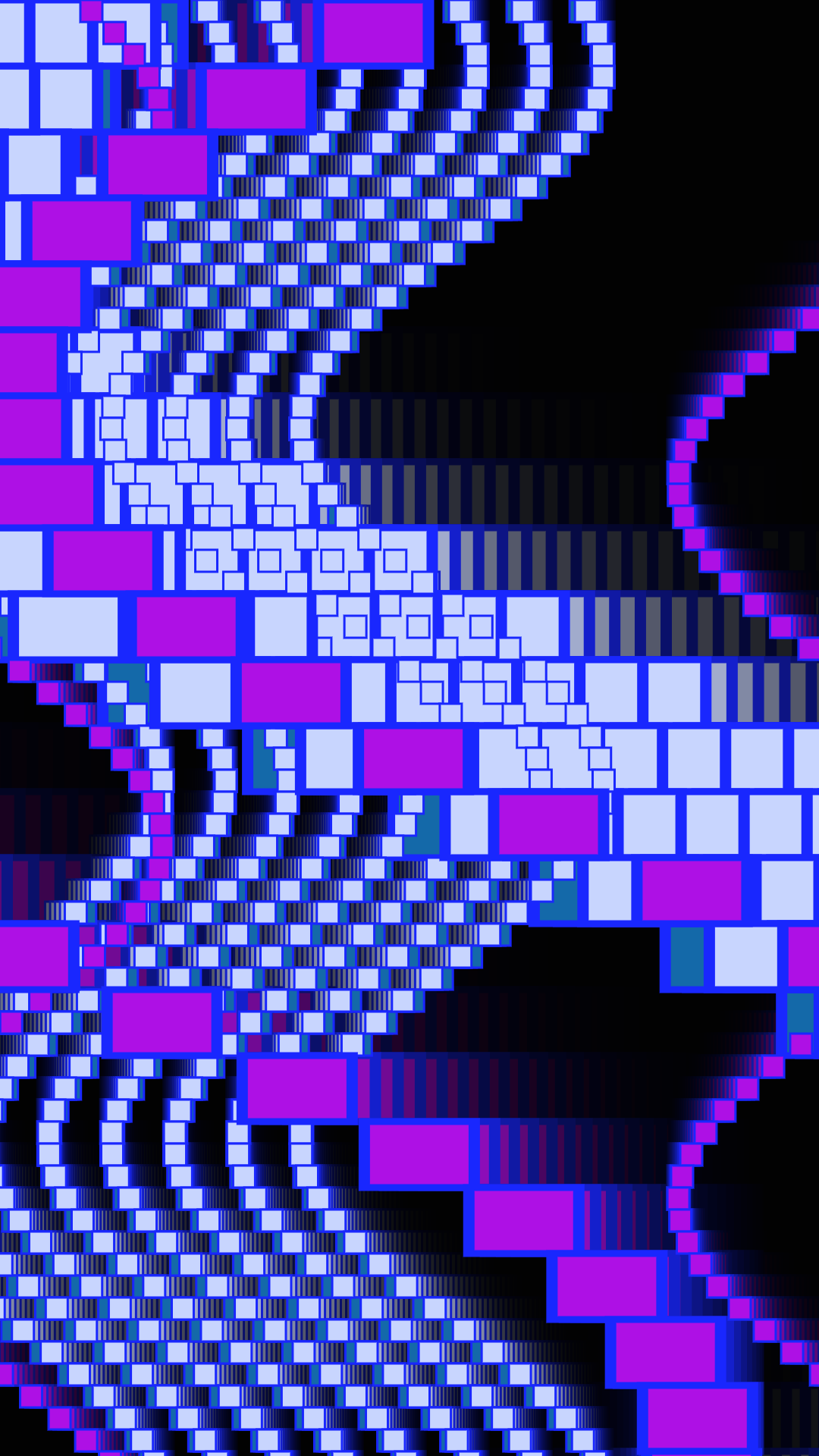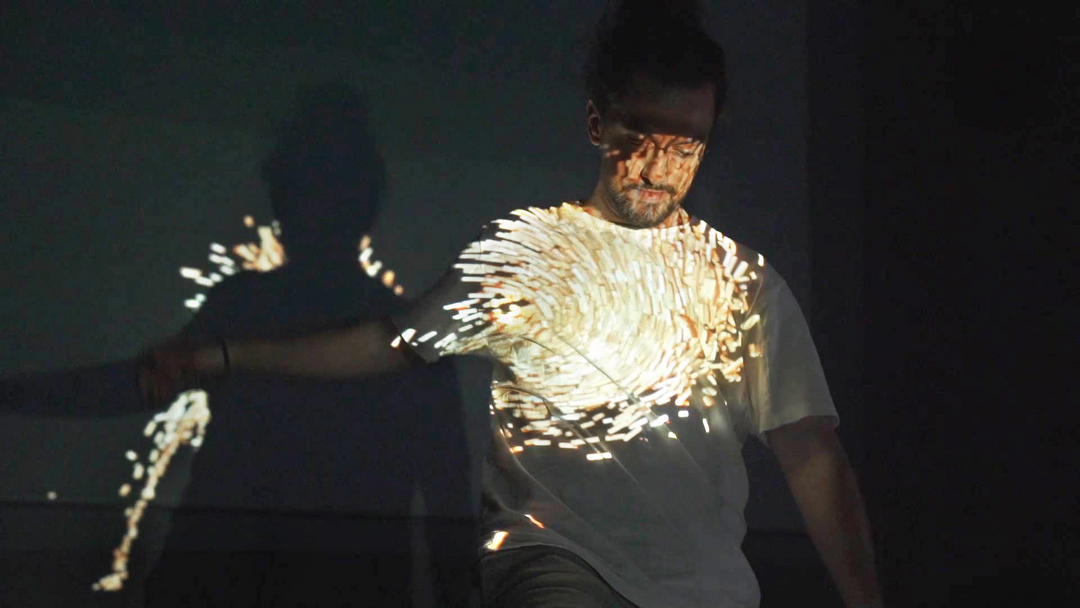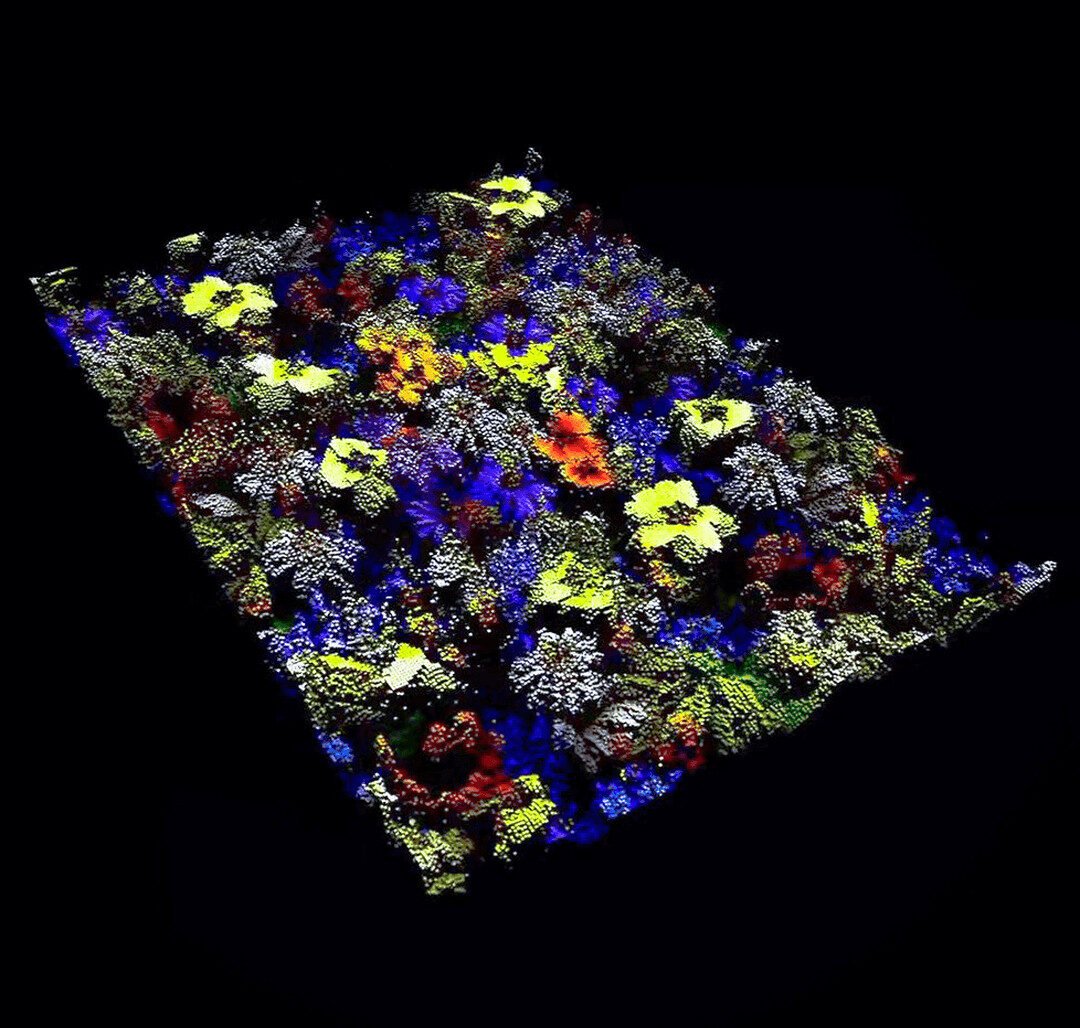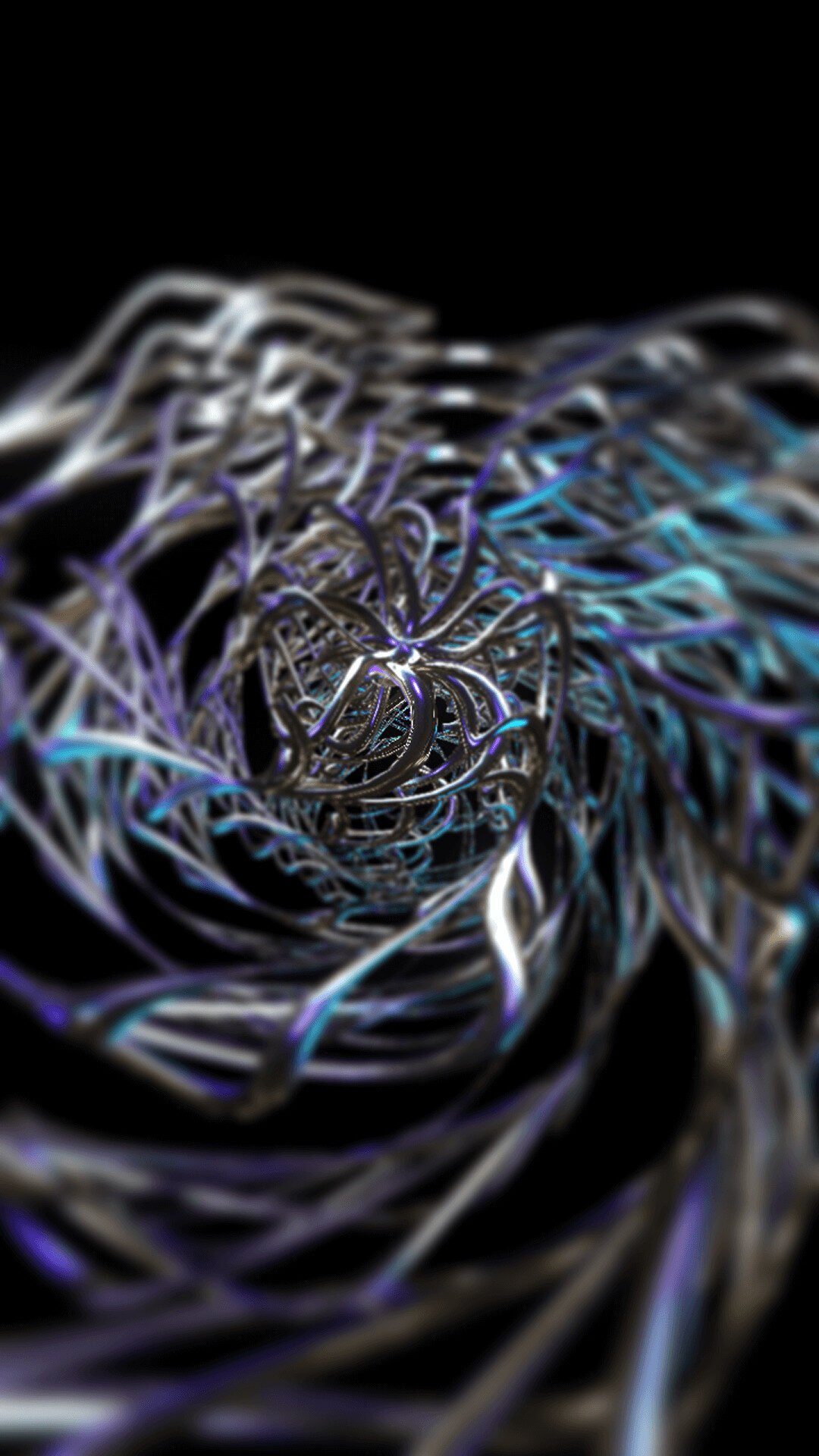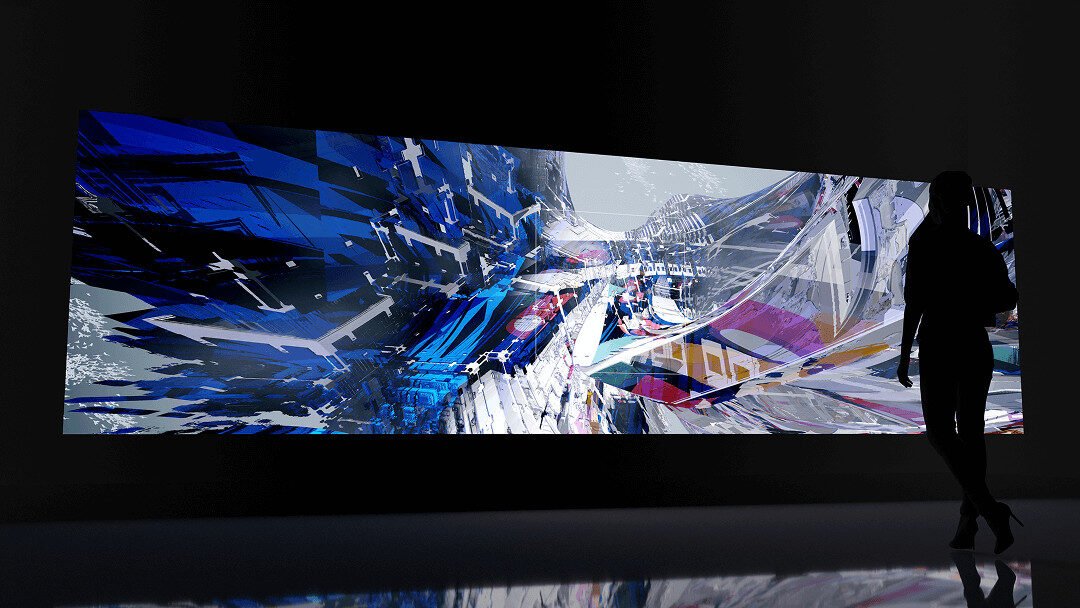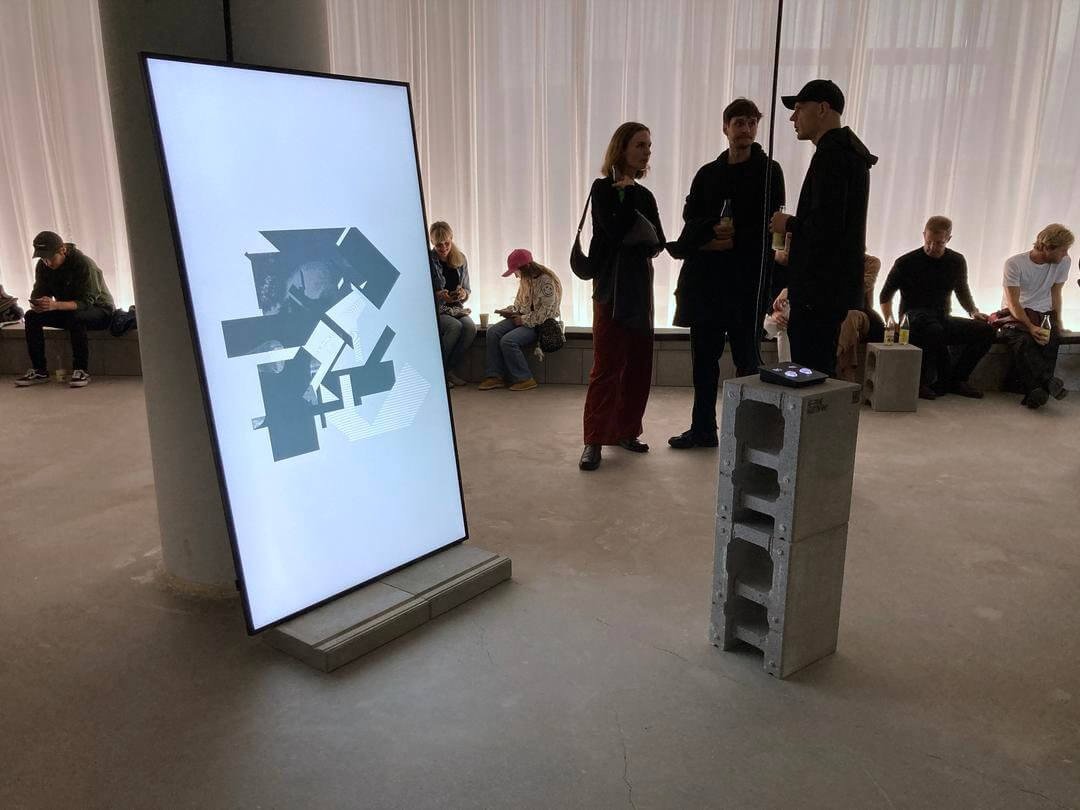Creativity is an all-encompassing element in life, and to be human involves inherent creativity.
ARTIST BIO
Reuben is generative artist from New Zealand, interested in creating innovative, highly technical and dynamic pen and ink artworks, utilising a pen plotter.
His passion for his art practice stems from his background in Architecture and drafting, as well as a desire for a unique and innovative creative expression, utilising maths and 3D modelling. Reuben is inspired by simple lines, and how proximity, density, and repetition allows the emergence of complex and rhythmic patterns. Reuben’s work occupies the space between traditional artistic methodologies and modern technical processes. The aim is always to find a new form, methodology, or way of pushing the envelope of what can be done with computational design
- Instagram: @reubenlauridsen
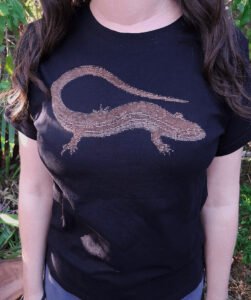
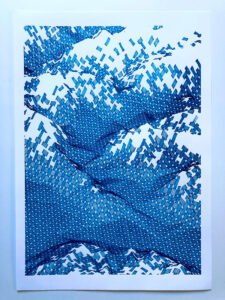

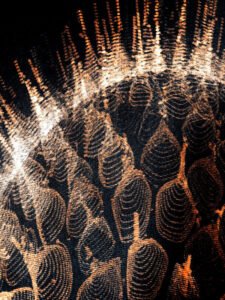
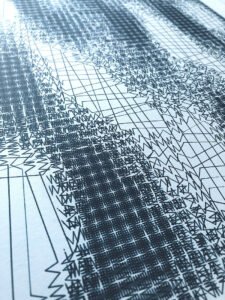
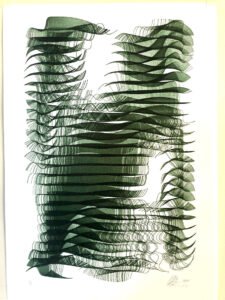

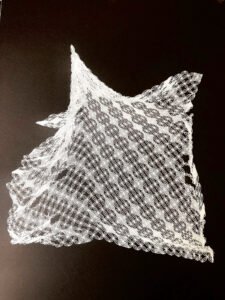
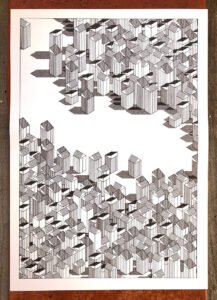
A particular interest is fabric-like patterns, eg. Scottish Tartan patterns, and New Zealand woollen blankets. I have been known to go through clothing shops just to find inspiration in patterns and textures.
Recently, I’ve been trying to do explorations with colour, as when I started out I invested a lot of time into black and white artworks. Ultimately I think this was because I had experience with drypoint printmaking, a medium which uses dynamic contrast of black on white. Colour is allowing a new exploration, introducing a vibrancy and language to my work that takes it in a new direction.
I have also started using bleach on fabric, as well as clothing. I’ve had a lot of interest in custom printed tshirts, so definitely an avenue I will continue to explore.
One thing I try to incorporate in all my artwork is an element of randomness (utilising the computer and coding process to dictate some of the outcome).
What Is one belief, insight, or idea that guides your creative process?
I believe that creativity is an all-encompassing element in life, and to be human involves inherent creativity. Naturally I find my creative process to be inspired by the world around me, whether it is the way I observe the patterns on a leaf, or the pocked texture of pavement as a starting point.
One challenge about generative art in particular is the story and emotion present behind traditional artistic expression. This is a welcome challenge as every artwork offers viewers the opportunity to see a unique interpretation of what each work means.
Can you tell us how you discovered Mixed art and what drew you into it?
When I was at University (Victoria University of Wellington), I did a paper called Introduction to Robotics, which explored several end effectors and applications for a 6-axis industrial ABB Robot. one such application was a pen, another was a clay extruder. I was fascinated by the role the robot played as the middleman in the creative process. From that point, I invested in a pen plotter (iDraw) to continue my journey.
What do you think defines your style or creative approach, and how did you arrive at that identity?
Simply, I think lines offer a really interesting avenue. I really love when viewers see one thing from a distance, and something completely different when they get up close. I can’t say I’ve had a clear defining point for my artistic style, however I think the exploration of different ideas and applications has created a unique style in itself.
How does a project usually begin for you? Do you have a creative ritual or structure you follow?
I keep a notebook close by, so whenever I have a moment of inspiration I can record what I found captivating, whether it be a pattern, process, or combination of both. This notebook is a great way of breaking the process into simple steps will (usually) lead to a generative design, sometimes my sketches will be forgotten about for months, before being revisited when I’ve found a way of achieving the original vision.
What tools or technologies do you use most, and how do they influence your visual language?
My trusty 2015 MacBook Pro and an iDraw A3 H plotter are the main hardware I use. I use predominantly 0.5mm rOtring Rapidograph pens as I find the line thickness works well with my designs. From a software perspective, I’m not a traditional computer coder, I have a background in Architecture, so I use Grasshopper3D which is a node-based parametric plugin for Rhinoceros3D. In the future I’d love to utilise Processing and p5js.
Do you feel there Is a strong generative art scene? What would you like to see evolve in it
The generative art community constantly inspires me, whether it is a new technique, or a crazy cool design, there is so much going on. I think as more and more tools and machines become accessible the community is going to continue to expand. I think the process behind generative art is fascinating and definitely where I get a lot of my social media engagement.
What advice would you give to someone who wants to start creating generative art but doesn’t know where to begin?
I took over a year to buy my plotter, I spent that time watching and re-watching all the videos, tutorials and content I could to justify if I wanted to take the plunge. On reflection I wasted a lot of time procrastinating. My advice is to anyone who is inspired to create their own generative art just to make a start. There are so many great free online tools if you have no code experience, all the way through to complex applications for those at that level. If plotting is a particular interest (as it was for me), you can buy cheap plotters, or look at the refurbished plotter market. It’s a very rewarding process to immerse yourself in!
Which artists or creators do you think are doing remarkable work and deserve much more recognition?
I look at the work of @bustavo, @pavlovpulus, @wp_line and am amazed. Their generosity with advice and encouragement is fantastic especially for newer plotters.
